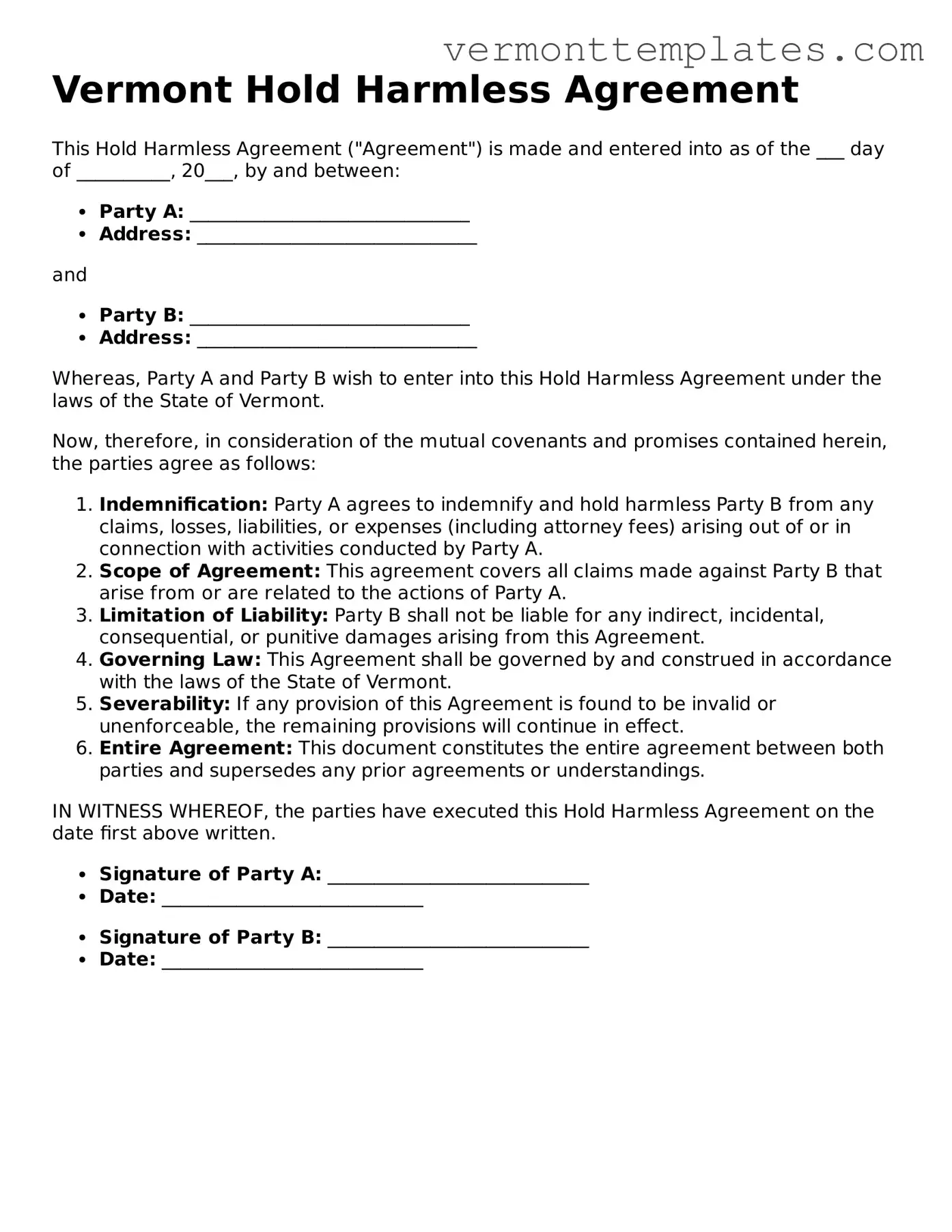The Vermont Hold Harmless Agreement shares similarities with the Indemnity Agreement, which serves a comparable purpose in protecting one party from legal liability. In an Indemnity Agreement, one party agrees to compensate the other for any losses or damages that may arise from a specific action or situation. Both documents emphasize the transfer of risk from one party to another, ensuring that the indemnifying party assumes responsibility for any claims that may arise. This creates a layer of protection for the party that is potentially exposed to liability, much like the Hold Harmless Agreement does.
Another document that bears resemblance to the Vermont Hold Harmless Agreement is the Waiver of Liability. This document is often used in recreational activities, where participants agree to waive their right to sue for injuries sustained during the activity. The Waiver of Liability, like the Hold Harmless Agreement, seeks to limit the liability of the party organizing the activity. Both documents highlight the importance of informed consent, as individuals acknowledge the risks involved and agree to assume responsibility for their own safety.
The Release of Liability form is also akin to the Vermont Hold Harmless Agreement. This document is commonly used in situations where one party releases another from any future claims or liabilities. By signing a Release of Liability, individuals often relinquish their right to pursue legal action against the other party for any injuries or damages incurred. This aligns with the principles of the Hold Harmless Agreement, which similarly aims to protect one party from claims arising from specific circumstances.
The Mutual Release Agreement is another document that shares characteristics with the Vermont Hold Harmless Agreement. In a Mutual Release Agreement, both parties agree to release each other from any claims or liabilities that may arise from their relationship or transactions. This document fosters a sense of finality and resolution, much like the Hold Harmless Agreement, which seeks to clarify and limit the scope of liability between the involved parties.
Additionally, the Liability Insurance Policy can be compared to the Vermont Hold Harmless Agreement. While not a contractual agreement between two parties, a liability insurance policy provides financial protection against claims of negligence or harm. The Hold Harmless Agreement often works in conjunction with such insurance policies, as it establishes the expectation that one party will assume responsibility for any claims, potentially triggering the insurance coverage. Both documents ultimately aim to mitigate risk and provide peace of mind to the parties involved.
For those seeking to ensure their wishes are carried out, the comprehensive Power of Attorney document is invaluable, enabling individuals to assign trusted representatives to manage financial and health-related decisions on their behalf.
Finally, the Consent Form is another document that bears similarities to the Vermont Hold Harmless Agreement. Consent Forms are frequently used in medical and research contexts, where individuals agree to participate in procedures or studies while acknowledging the associated risks. Like the Hold Harmless Agreement, Consent Forms require participants to understand the potential for harm and accept responsibility for their decision to proceed. Both documents reinforce the principle of informed consent, ensuring that individuals are aware of and accept the risks involved in their actions.
